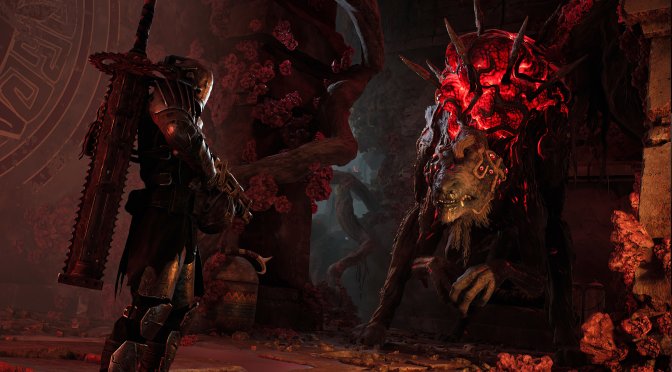Remnant 2 releases later today and it will be the second game powered by Unreal Engine 5 (the first one was Layers of Fear). And, surprisingly enough, it’s also the first game that is using UE5’s Nanite in order to eliminate distant geometry/object pop-ins.
Below you can find a video in which we showcase how the game handles its distant objects/textures. As you can see, thanks to Nanite, Remnant 2 does not suffer from any pop-in or pop-up issues. And this right here is one of the best features of this new action-survival shooter.
Traditionally, games handled distant objects with low-quality assets. When players were getting closer to them, their high-quality assets were simply popping up. By adjusting the Level of Detail setting, players could increase the distance in which the game could display its high-quality assets.
A clever way to hide the pop-up issues was the inclusion of a fade-in/fade-out filter. By using this, some games could make the transition to the higher quality assets a bit smoother. However, for unknown reasons, most games weren’t using such an effect, resulting in a truly awful gaming experience. Seriously, in some games, objects, trees and grass were changing right in front of you.
With Unreal Engine 5’s Nanite, Level of Detail (LOD) is automatically handled and no longer requires manual setup for individual mesh’s LODs. Loss of quality is also rare or non-existent, especially with LOD transitions.
From what we can see, Remnant 2 uses Nanite for all of its objects, trees, and grass. And that’s something that we truly appreciate. Yes, the game’s graphics do not justify its ridiculously high GPU requirements. However, Remnant 2 is at least a great-looking game. Not only that, but the game does not suffer from any shader compilation stutters. Both Layers of Fear and Remnant 2 do not have this kind of stutters, and both of them use Unreal Engine 5. So yeah, things are looking promising regarding this.
My only gripe with Remnant 2 is its Ambient Occlusion implementation. For some reason, AO completely disappears from the edges of your screen while moving. I don’t know why this is happening, but Gunfire needs to fix it. Once you notice it, it can be a big deal breaker. I also believe that the game would greatly benefit from RTAO.
What’s also interesting is that Gearbox has sent us a review code and upon testing it on a second PC system, we can confirm that the Ultimate Edition is on a newer version. For instance, the review code does not support DLSS 3 Frame Generation. Moreover, the framerate setting (in the review code) supports 30fps/60fps/Unlimited. On the other hand, the Ultimate Edition packs even more framerate settings. My guess is that the Ultimate Edition already has the day-1 patch, and that’s why it’s so different from the review code.
Stay tuned for our PC Performance Analysis!

John is the founder and Editor in Chief at DSOGaming. He is a PC gaming fan and highly supports the modding and indie communities. Before creating DSOGaming, John worked on numerous gaming websites. While he is a die-hard PC gamer, his gaming roots can be found on consoles. John loved – and still does – the 16-bit consoles, and considers SNES to be one of the best consoles. Still, the PC platform won him over consoles. That was mainly due to 3DFX and its iconic dedicated 3D accelerator graphics card, Voodoo 2. John has also written a higher degree thesis on the “The Evolution of PC graphics cards.”
Contact: Email

